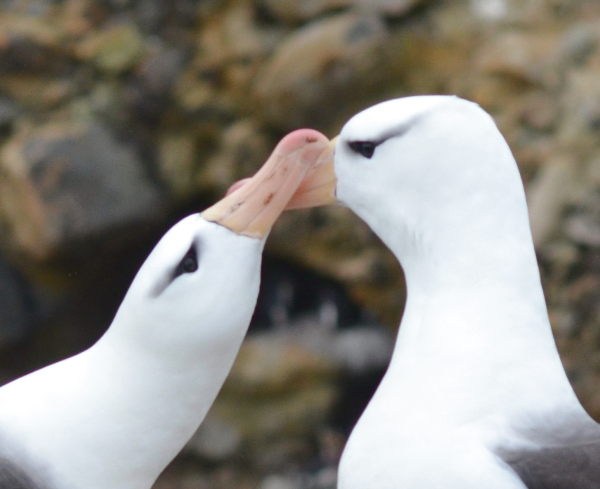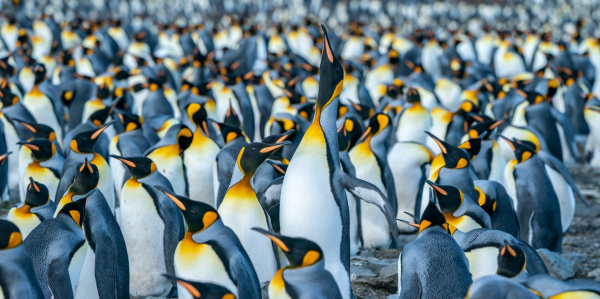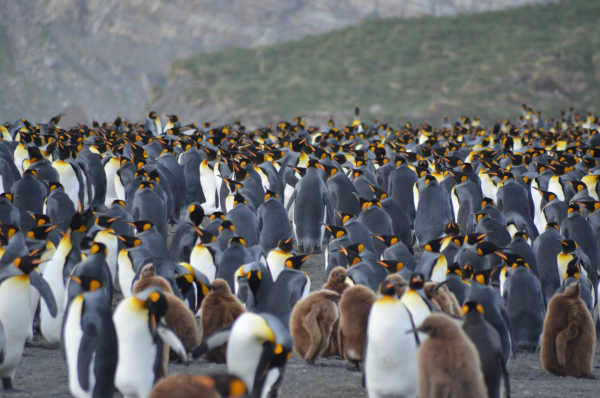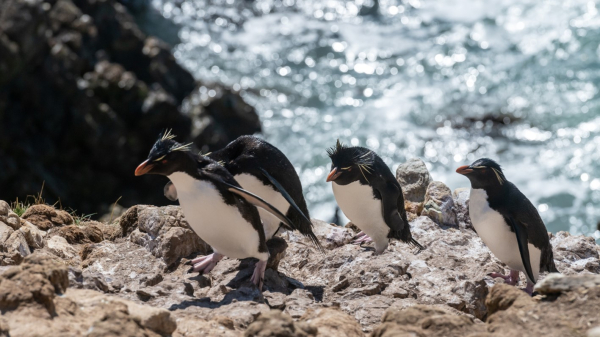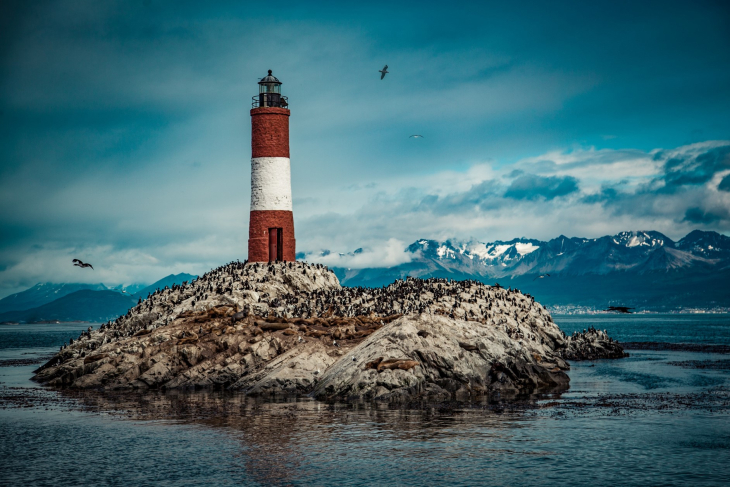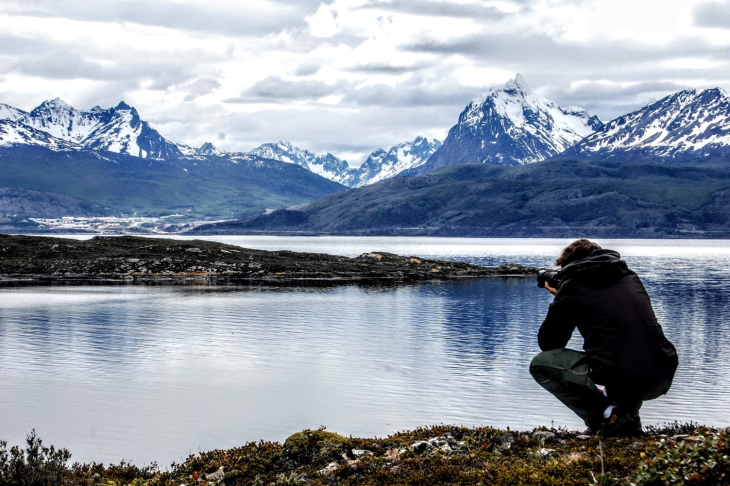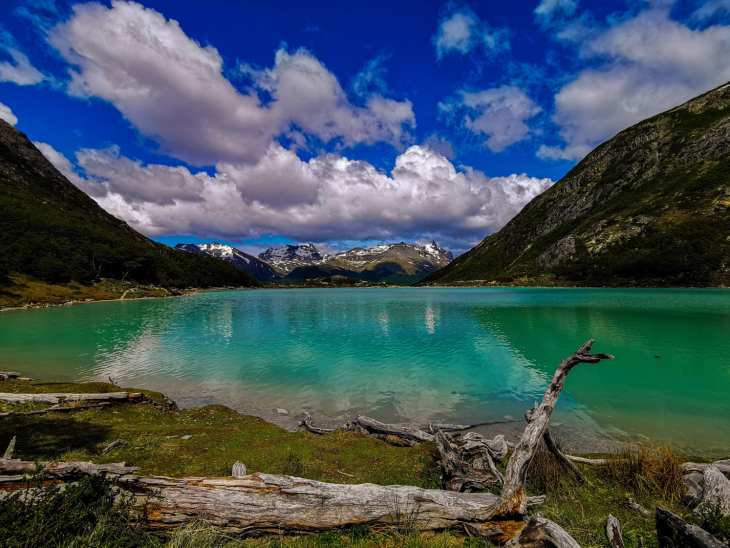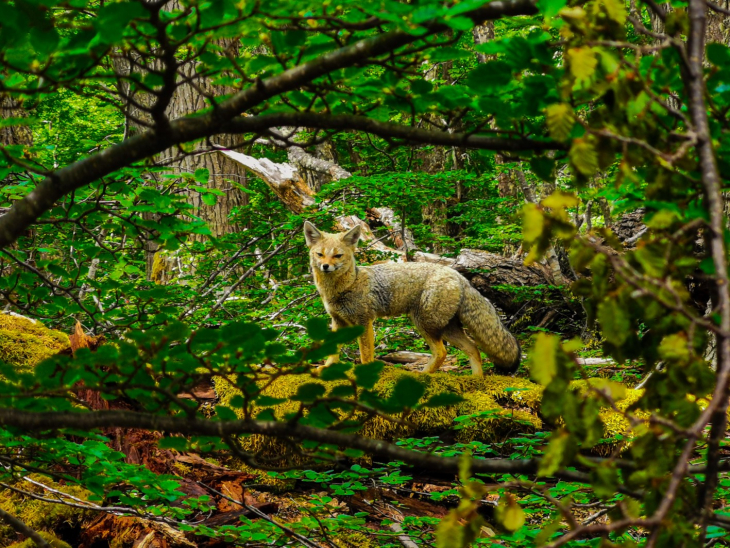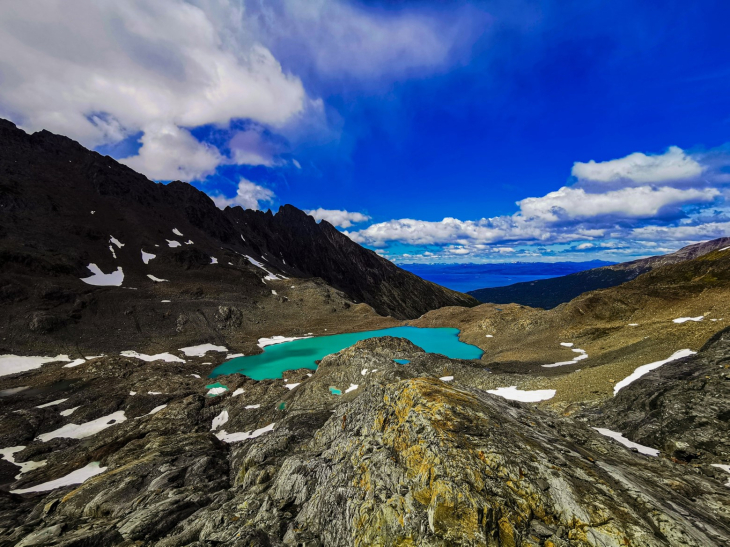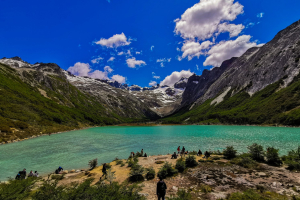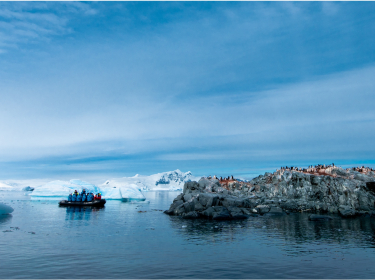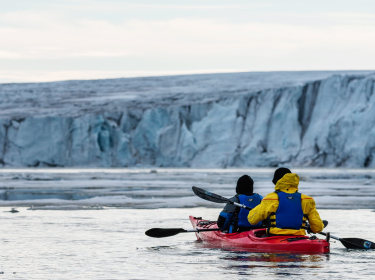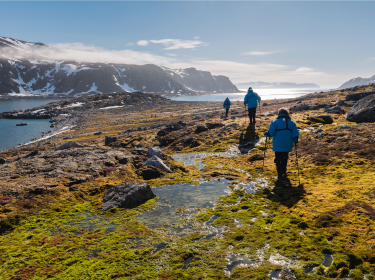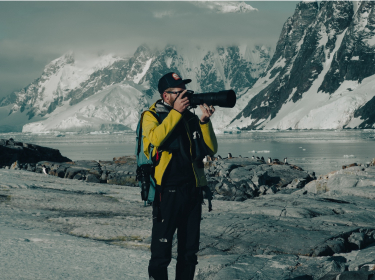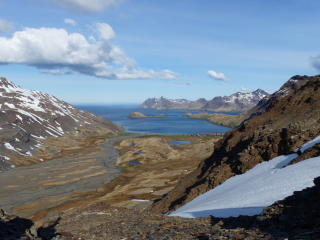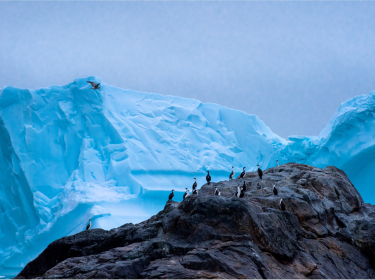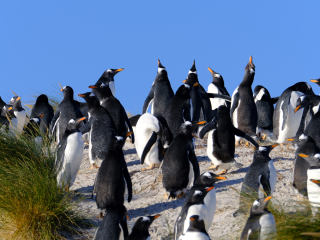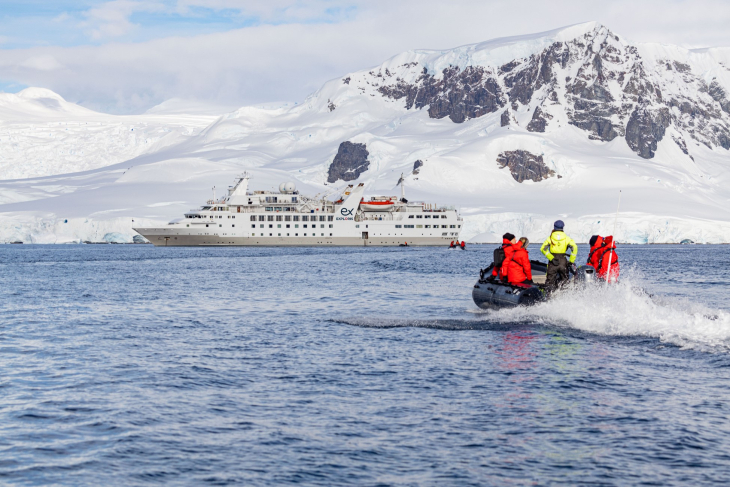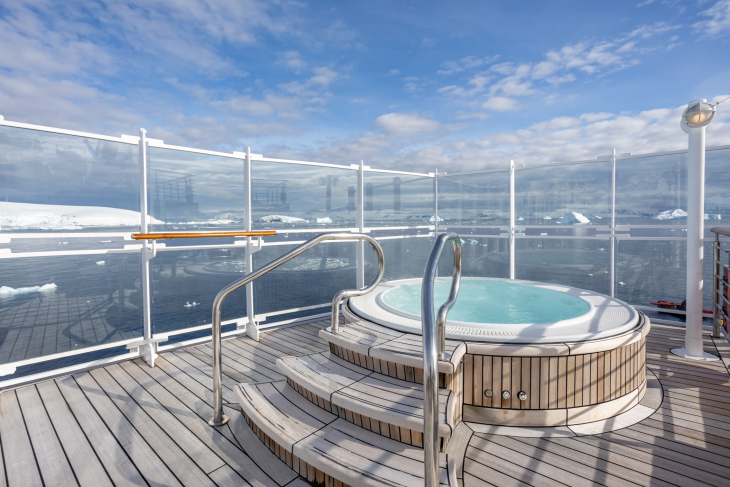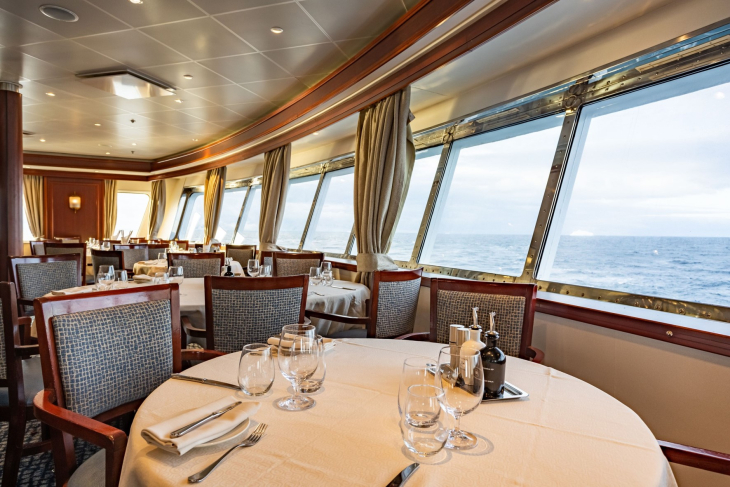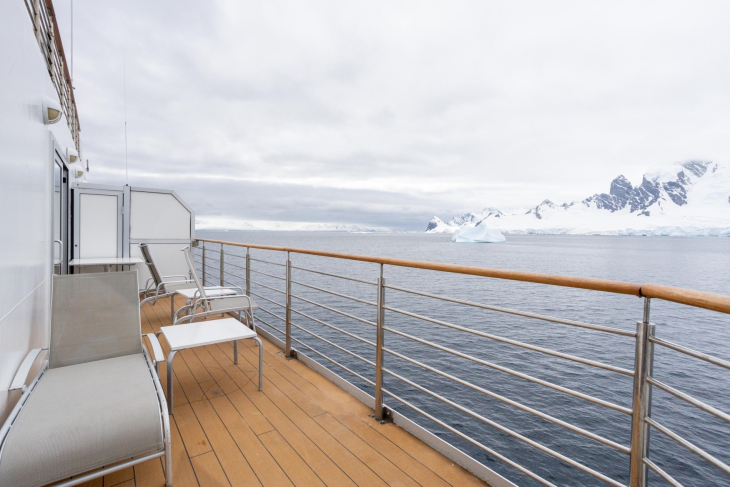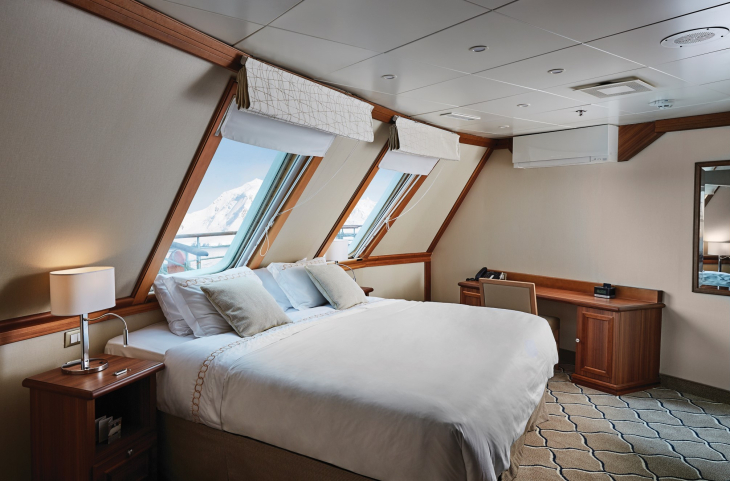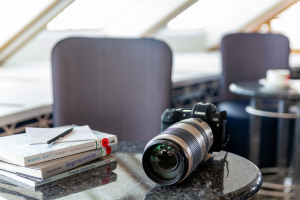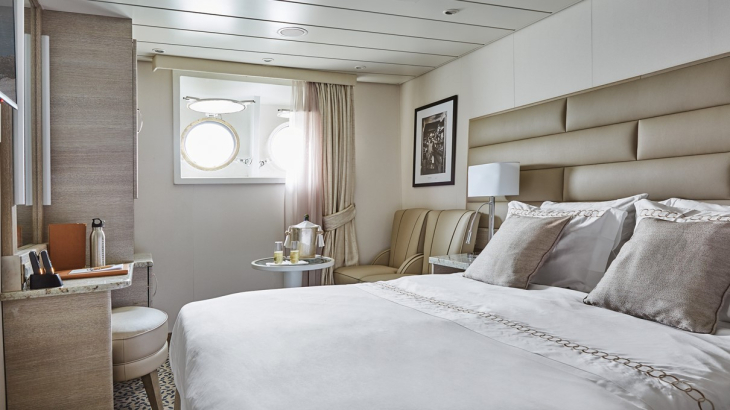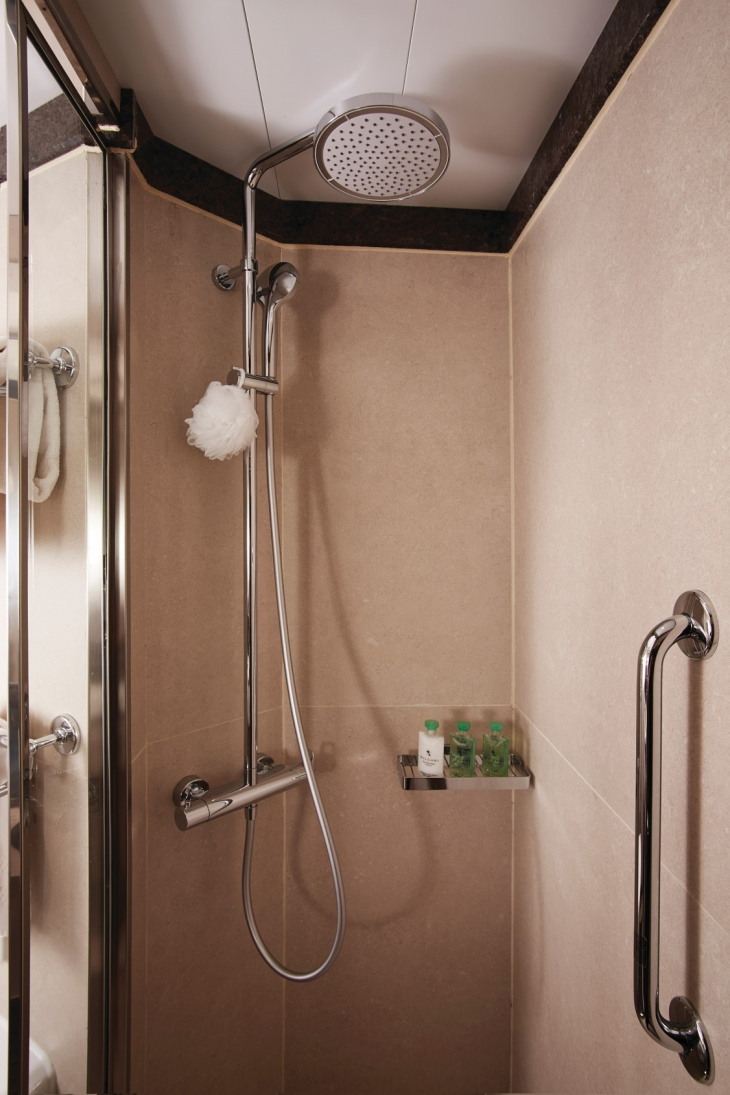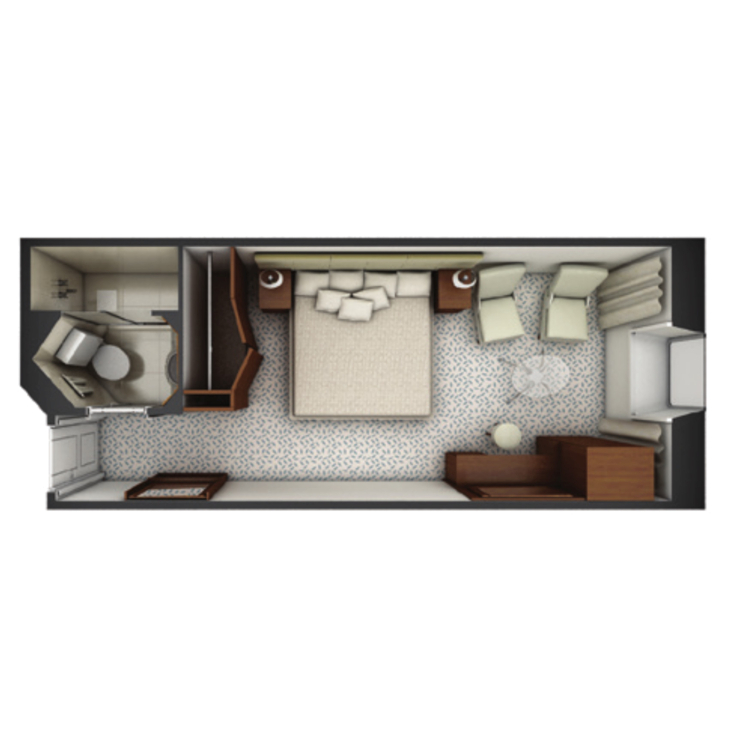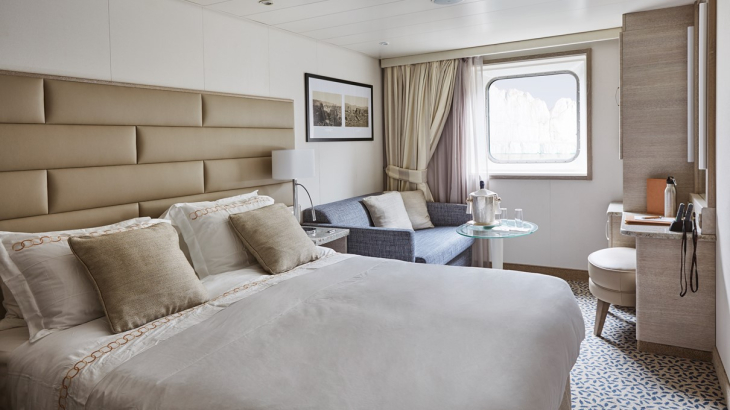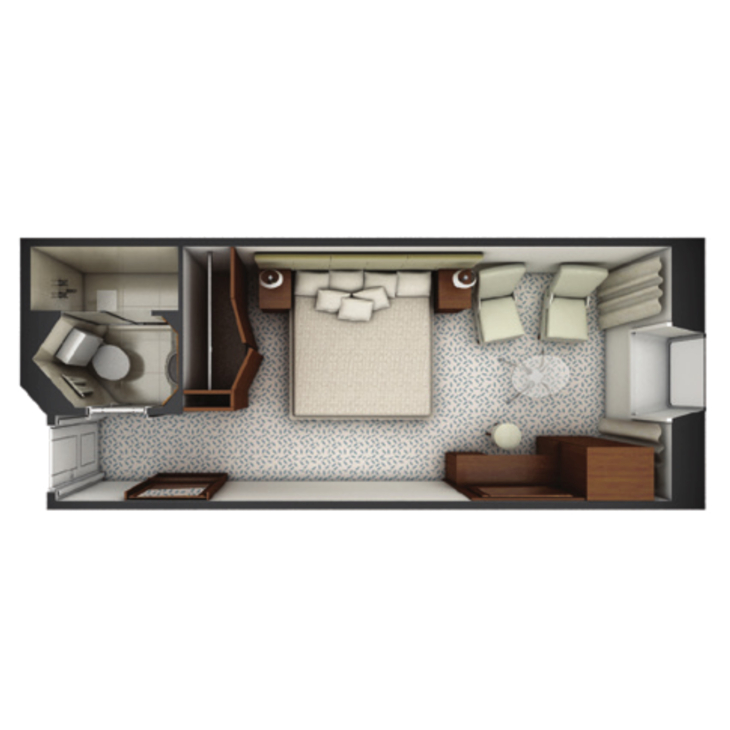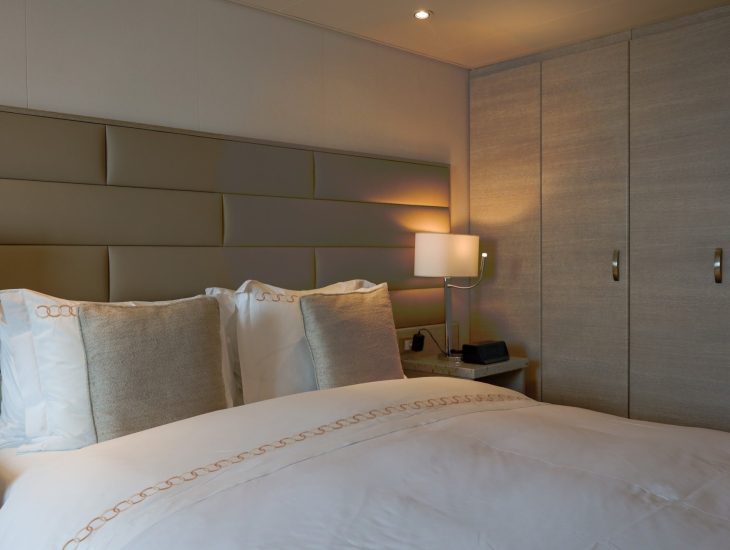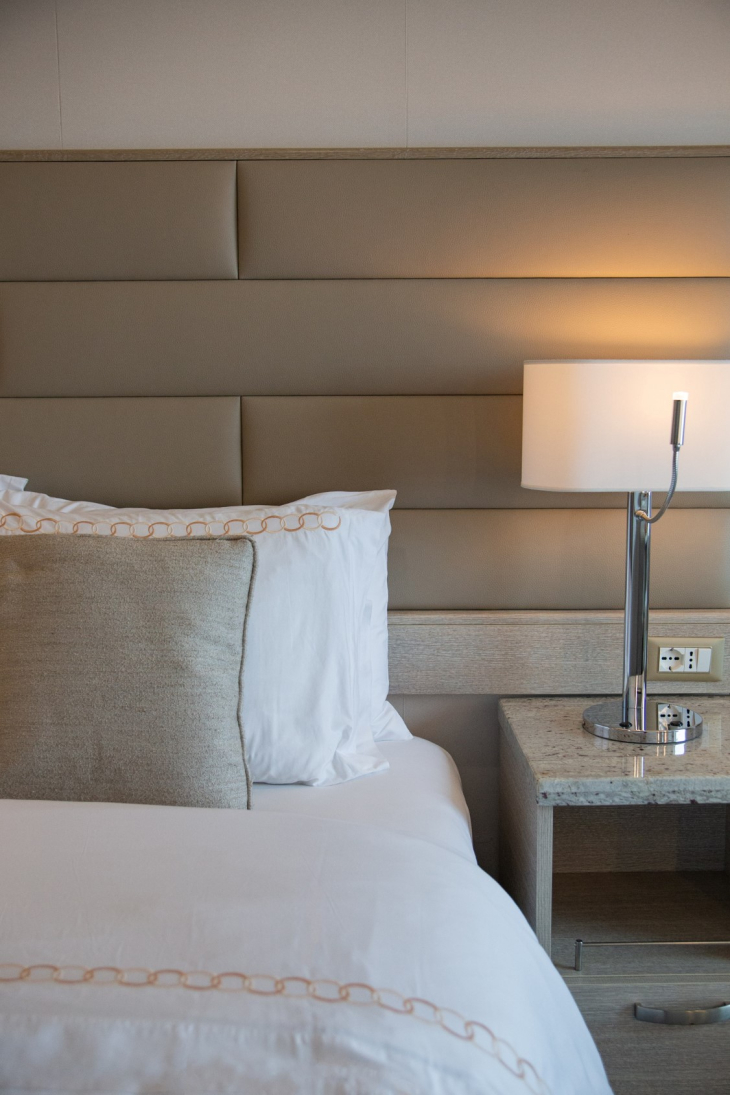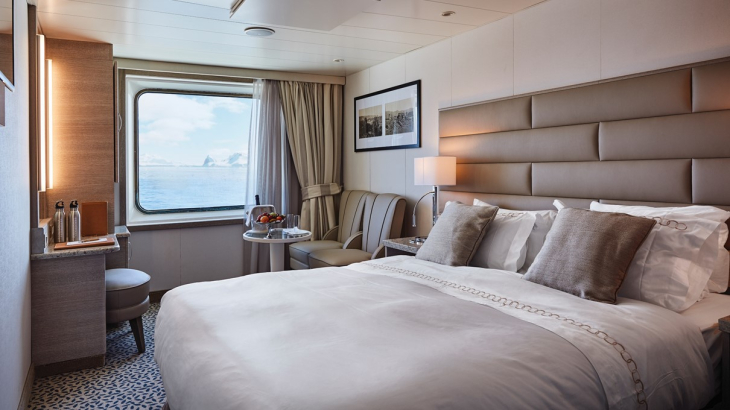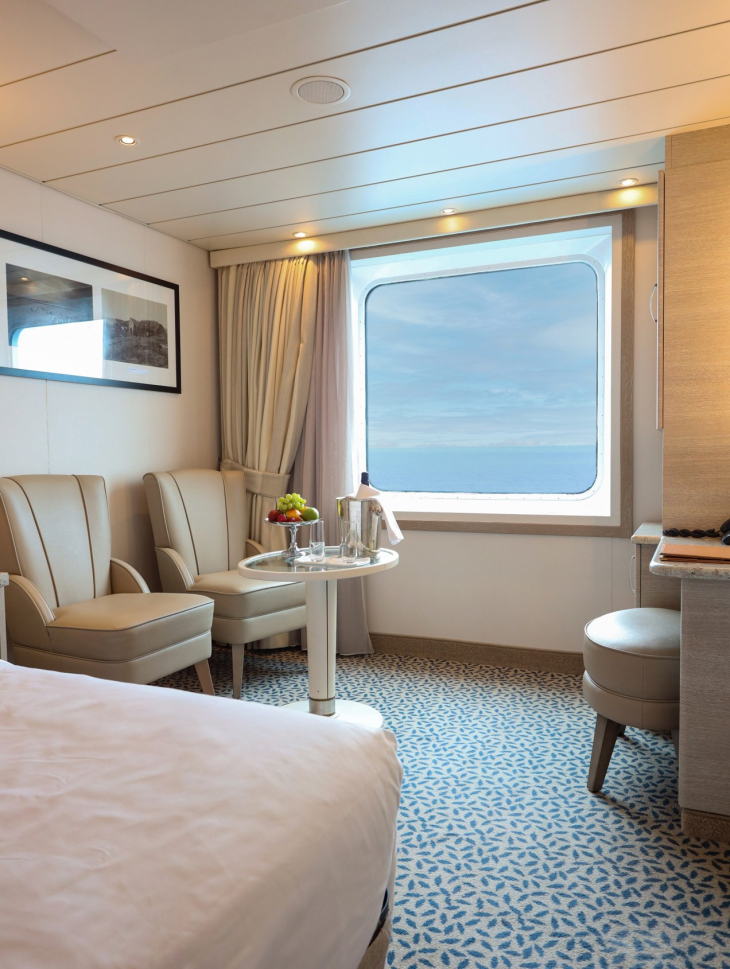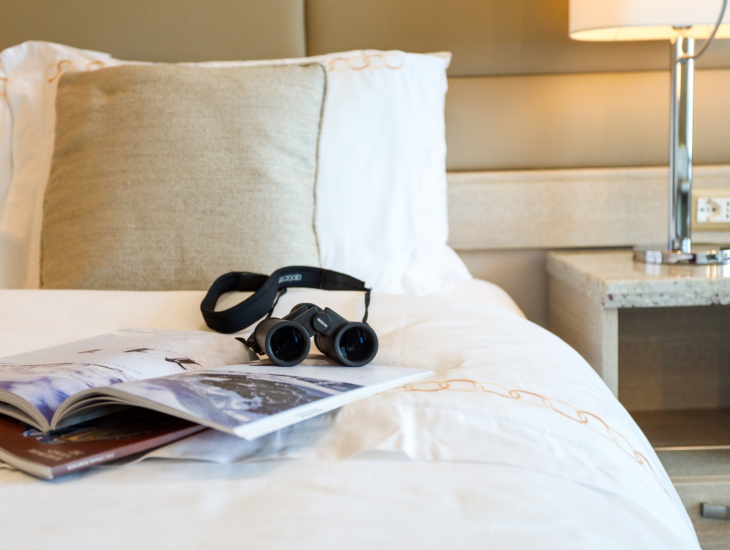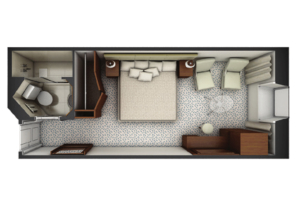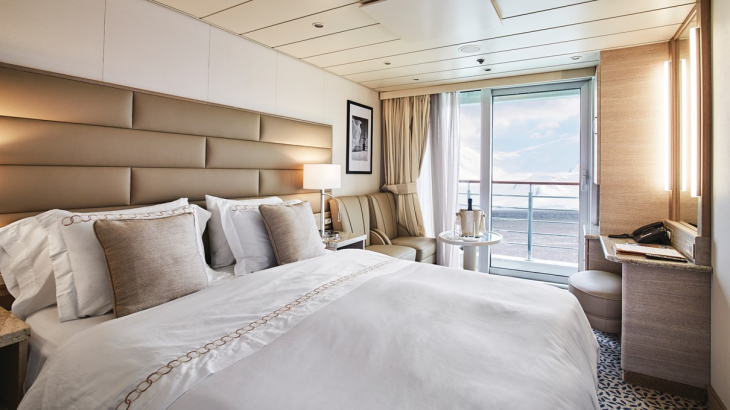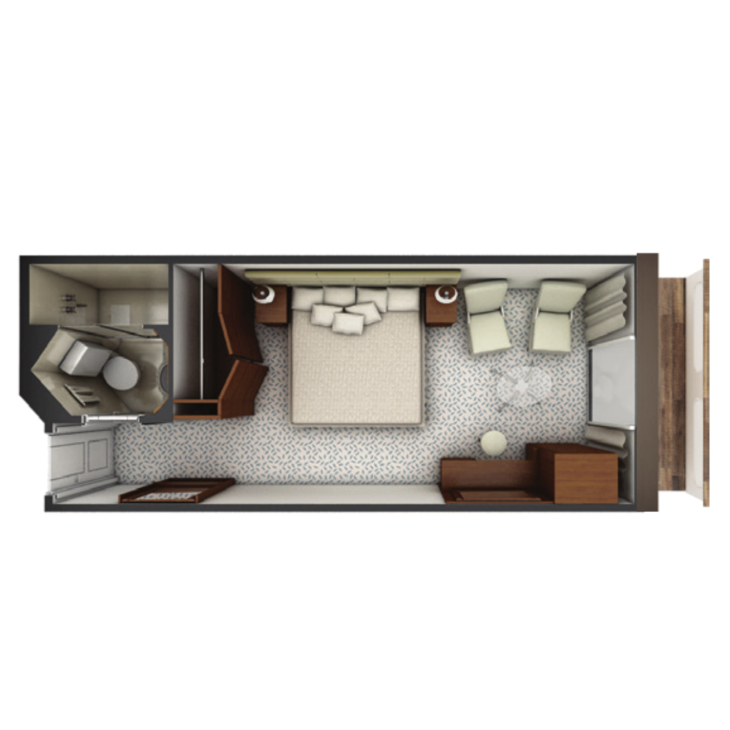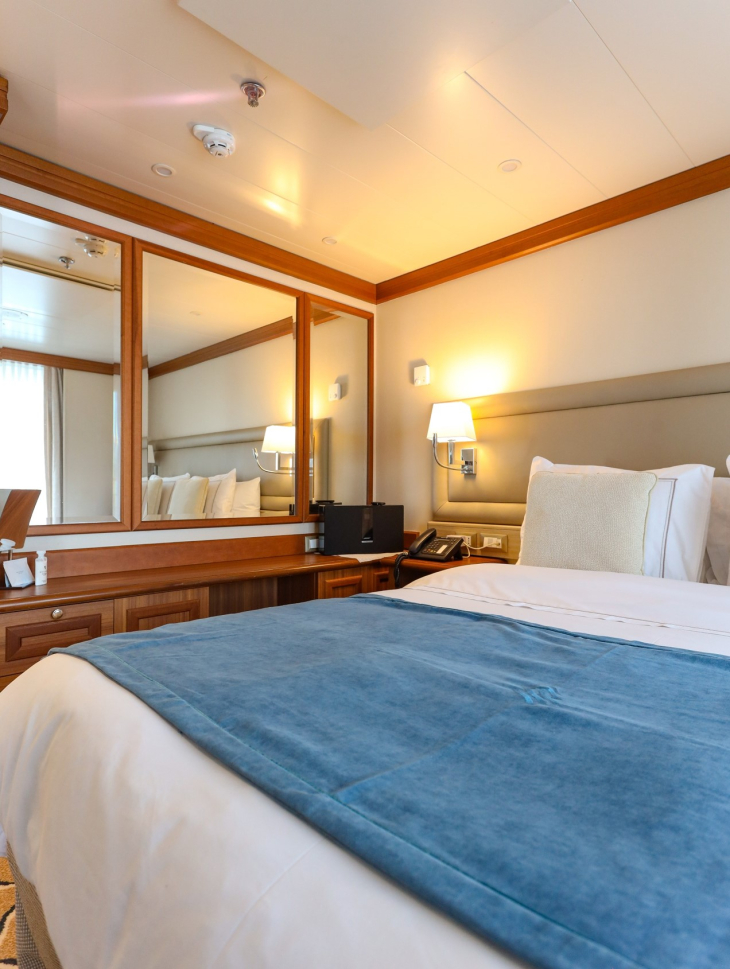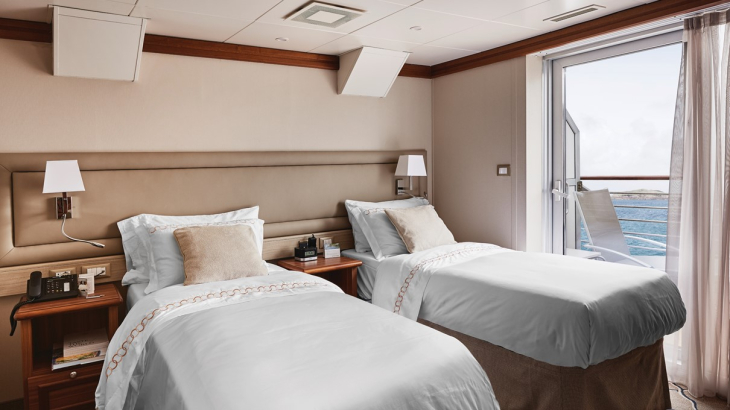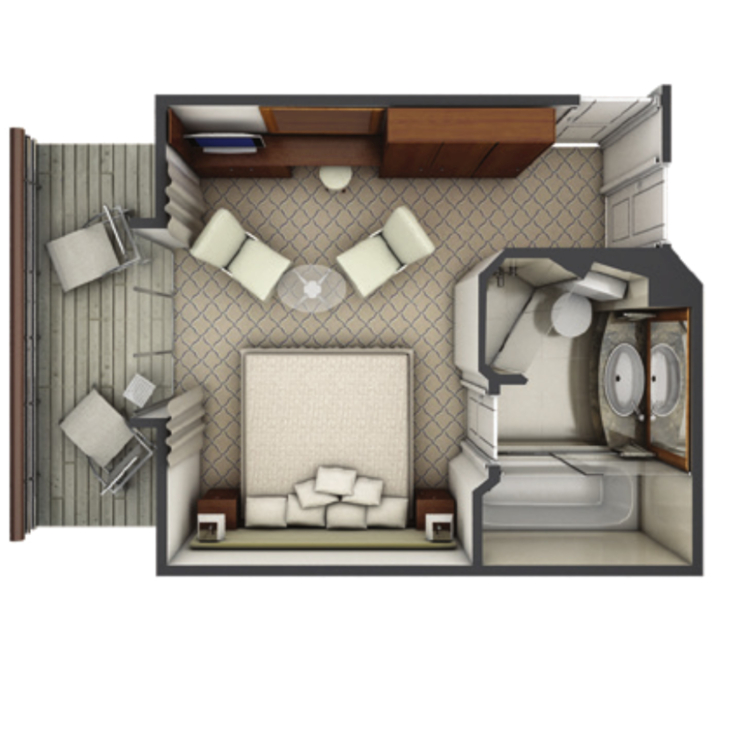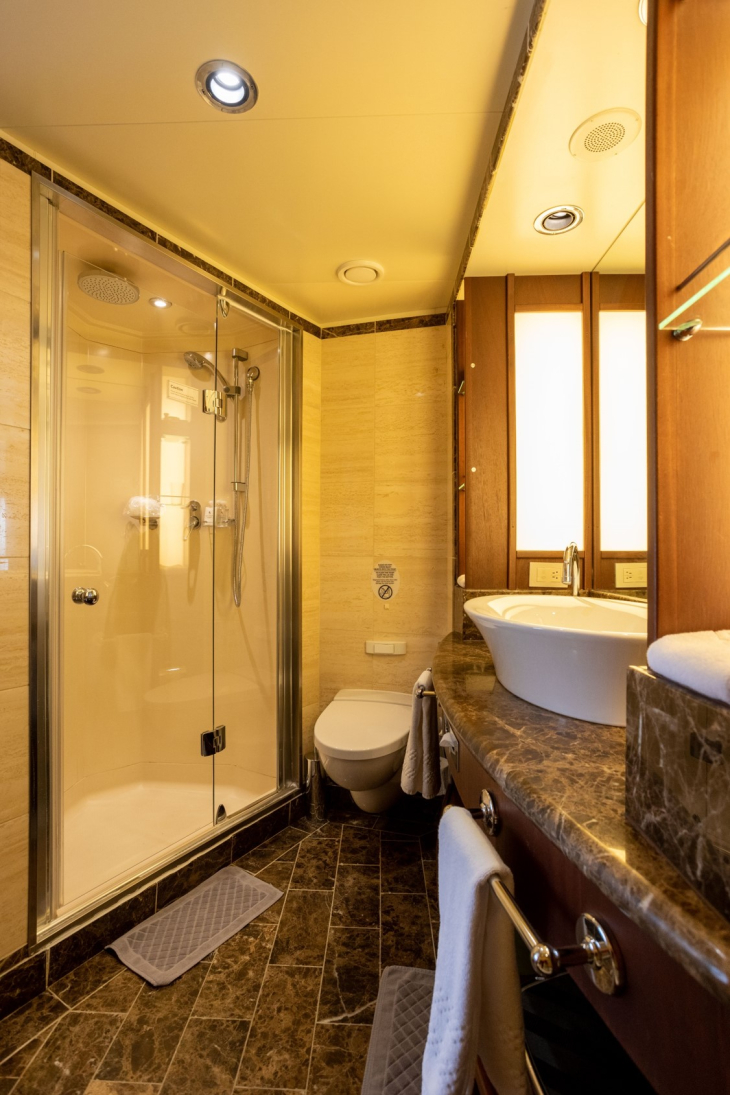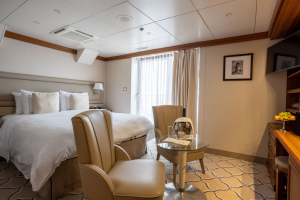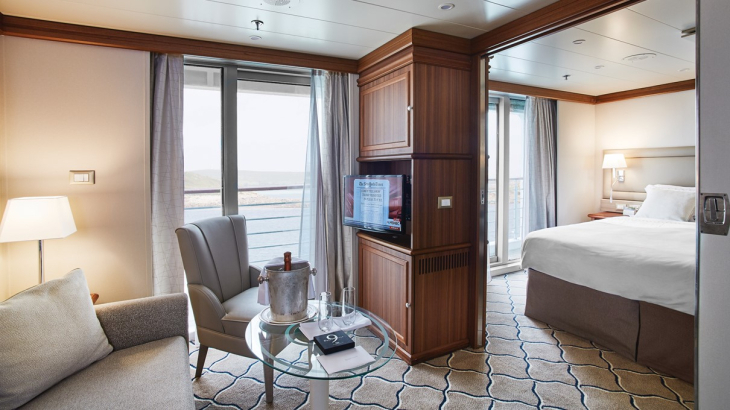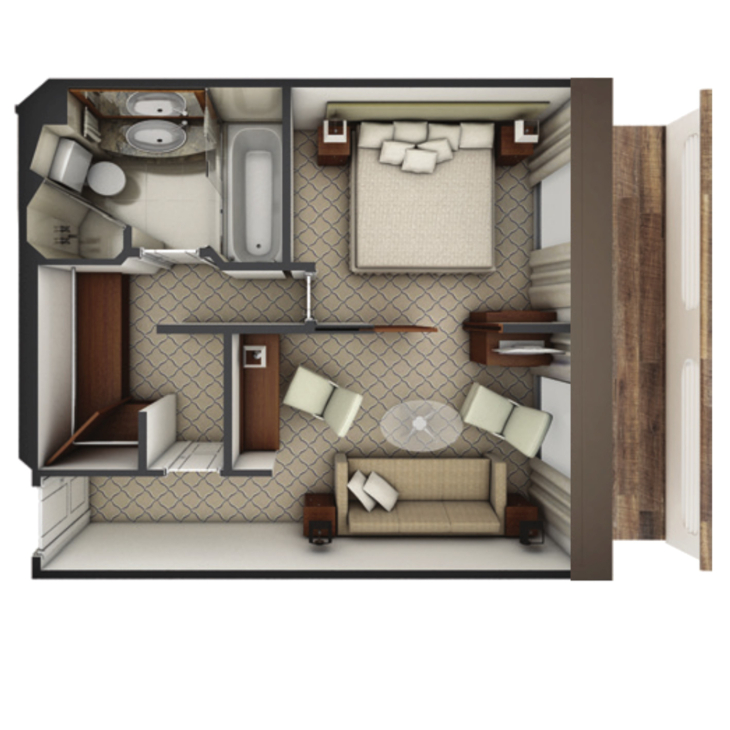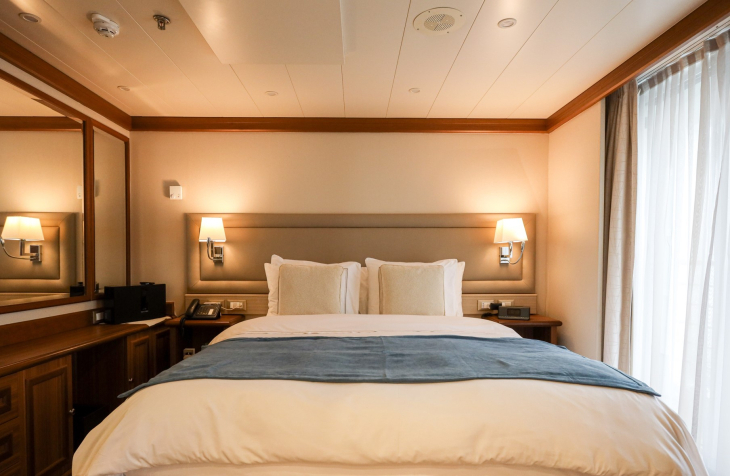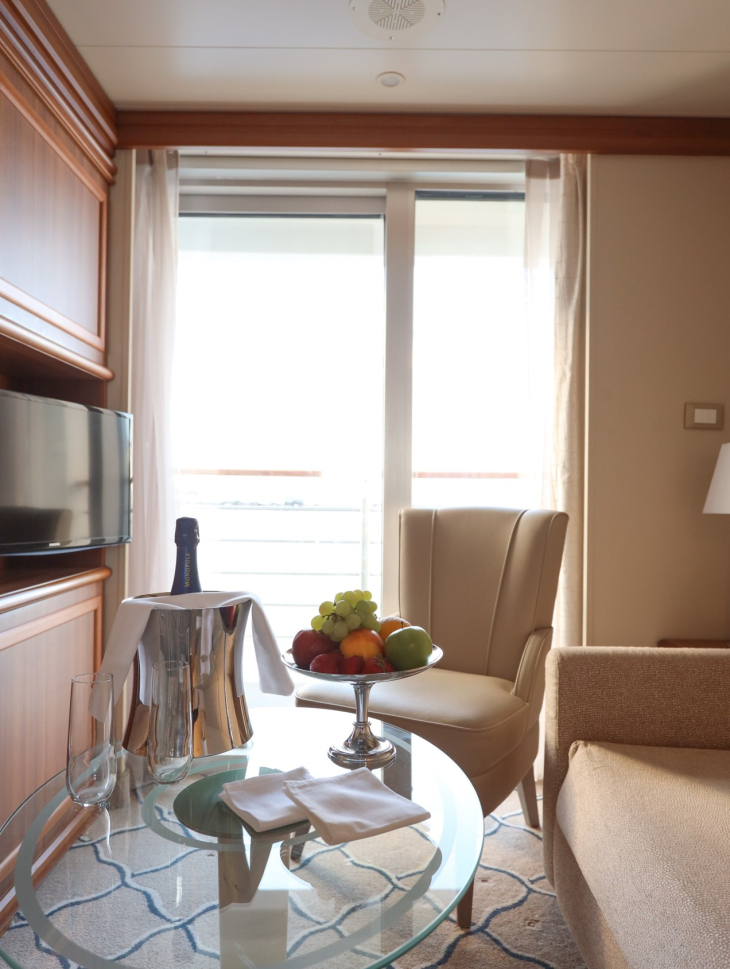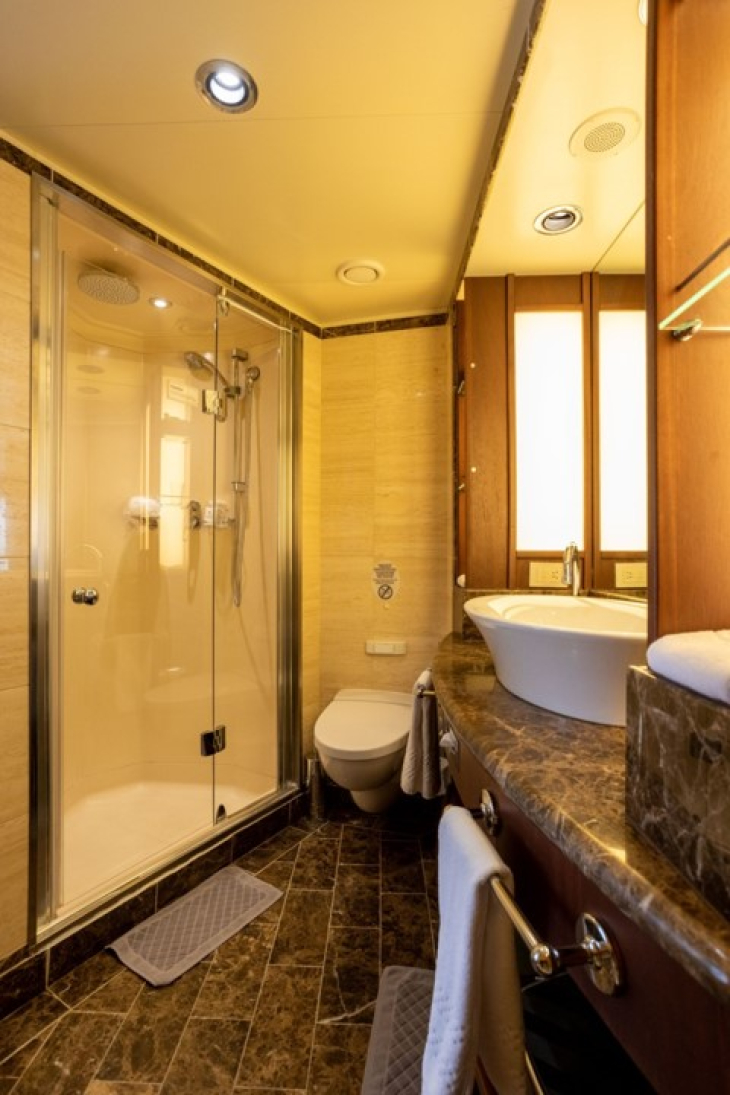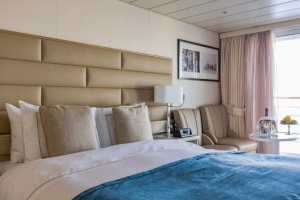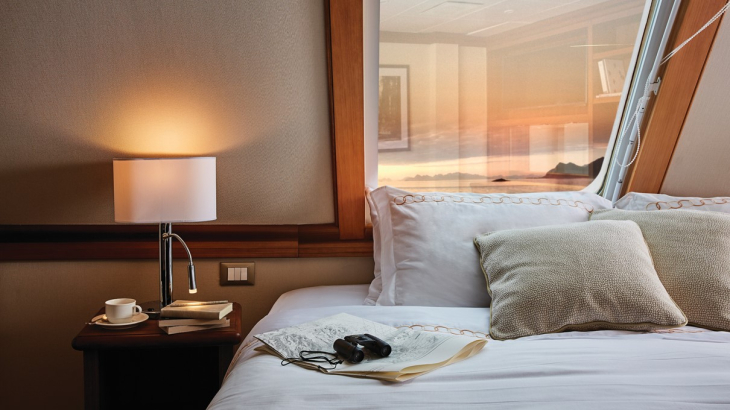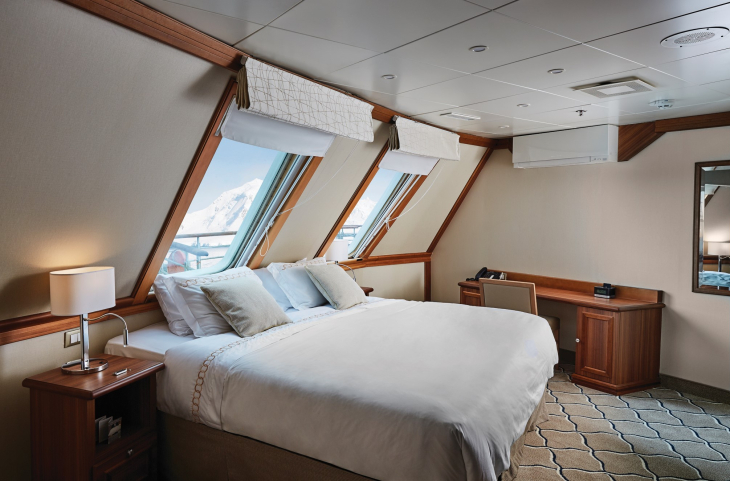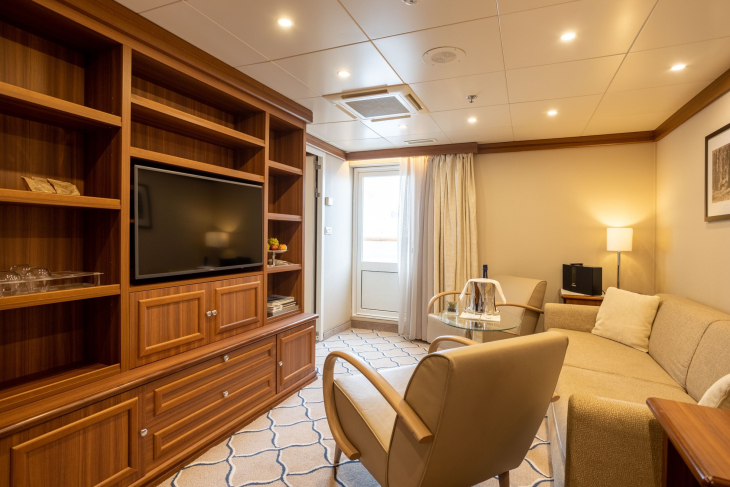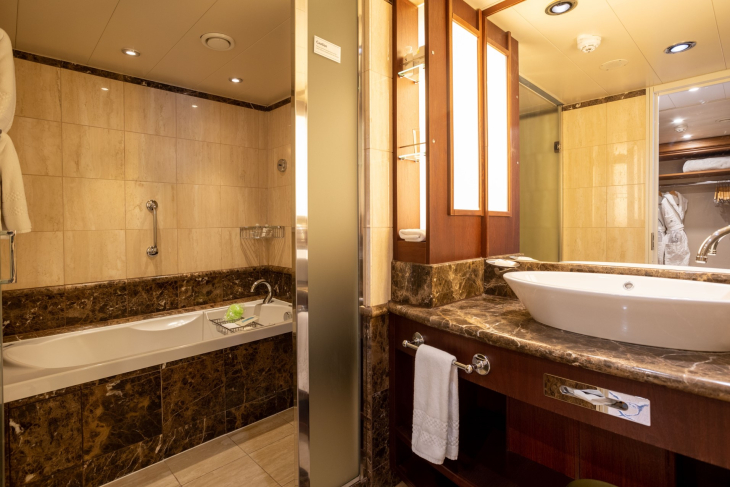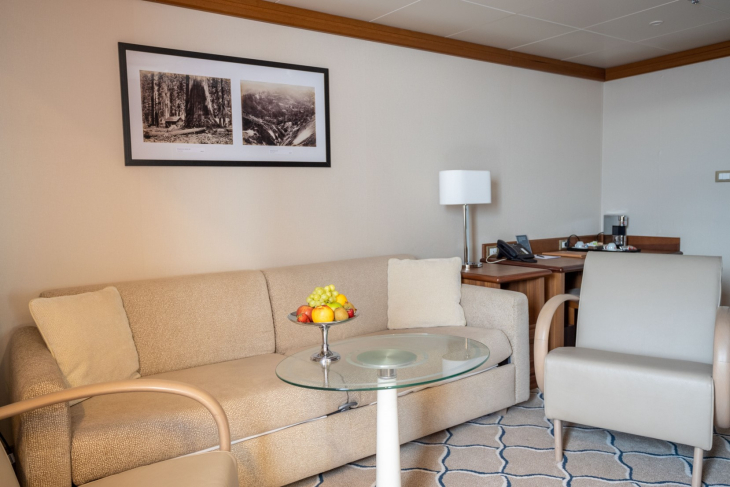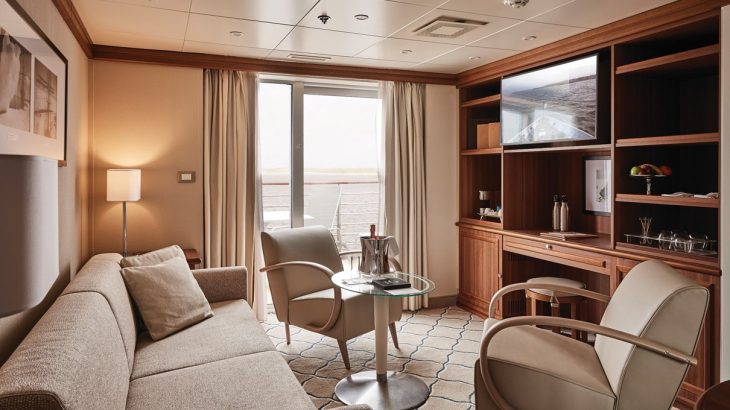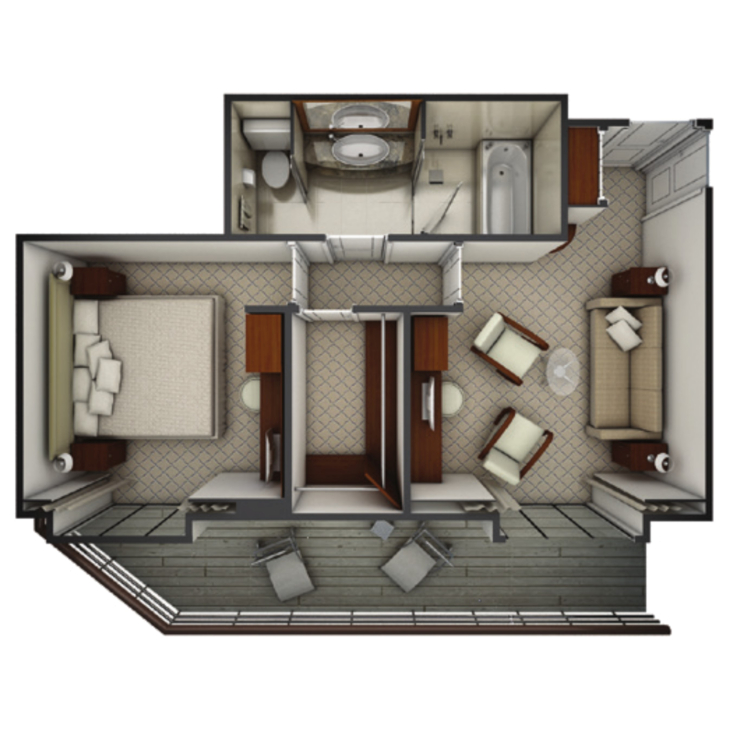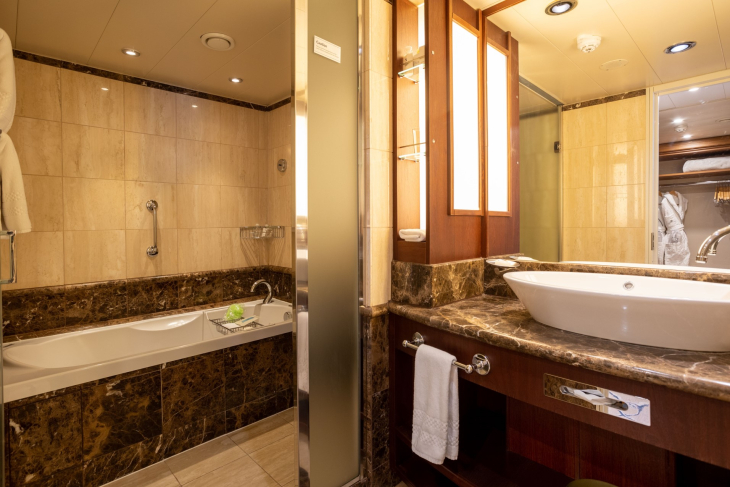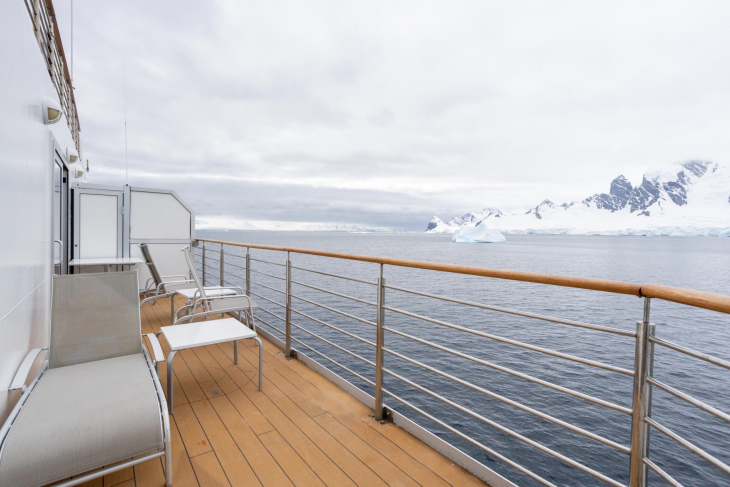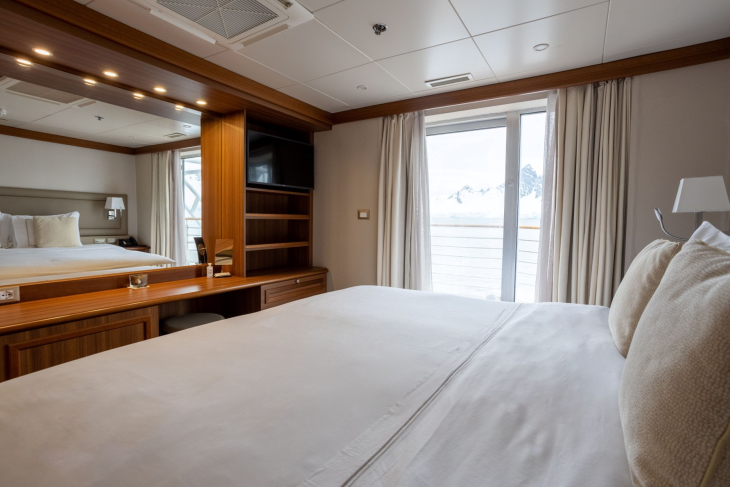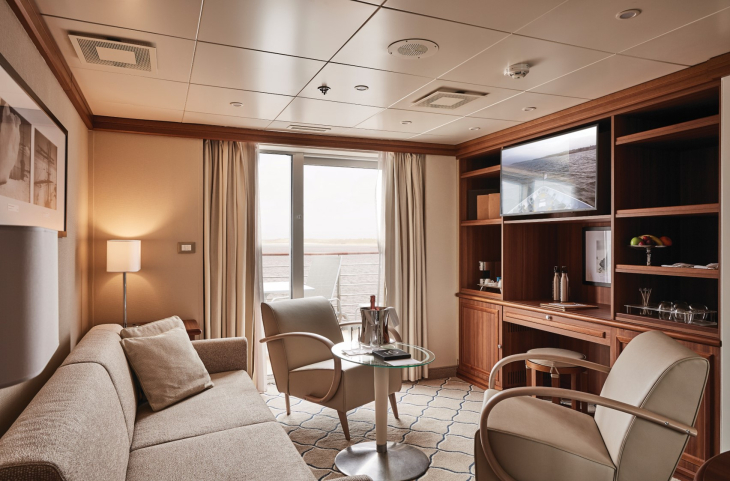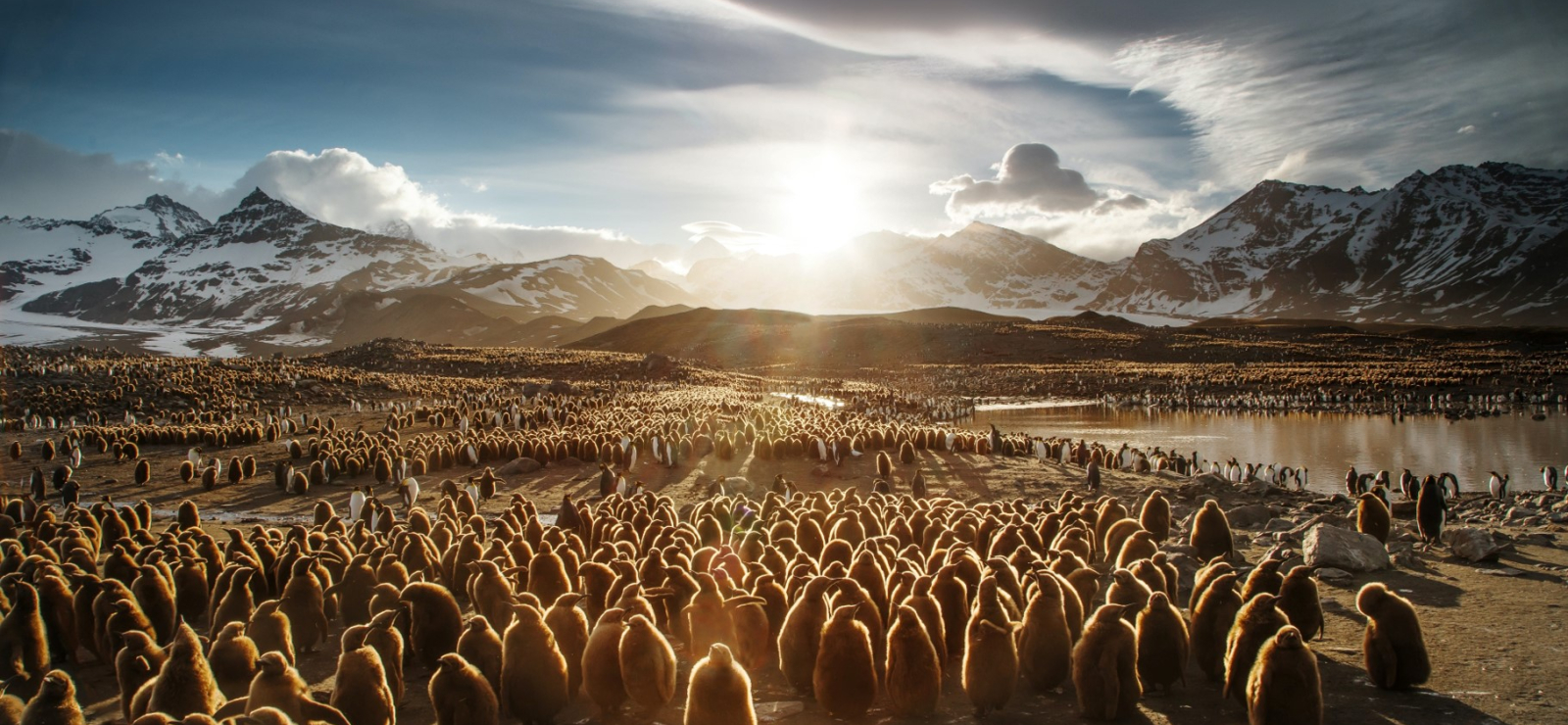

THE GREAT SOUTHERN LOOP
from
22 January 2026
to
09 February 2026
19
days,
17
nights on board
Ushuaïa – Ushuaïa (via Buenos Aires, Argentina)
- Your expedition
- Itinerary
- Activities on board
- Staterooms & Fares
- Your crew
- Extension Tours
- Special Guests
- Gallery
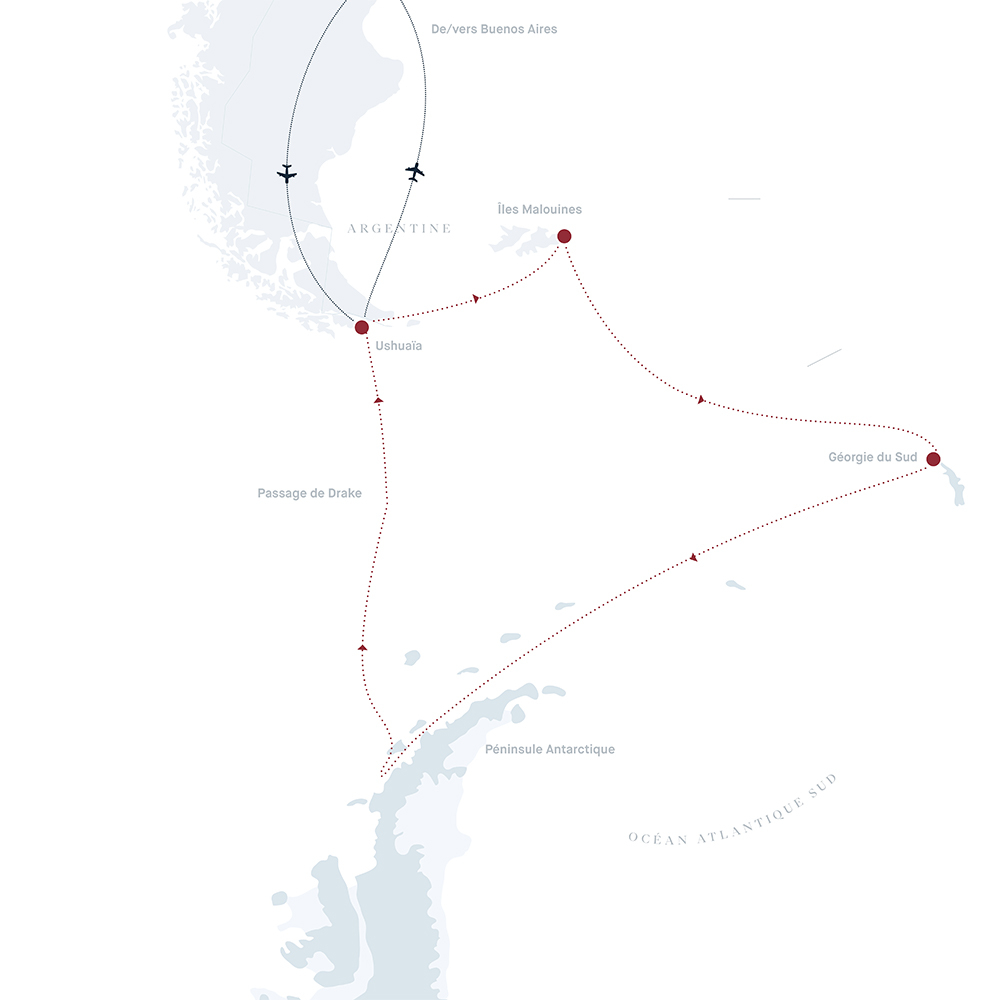
YOUR EXPEDITION
THE FALKLAND ISLANDS – SOUTH GEORGIA – THE ANTARCTIC PENINSULA
So you’ve decided to travel across the world: why not explore all there is to see? Delight in the greenery of the Falklands and the icy expanses of Antarctica; see the gorgeous black-browed albatross and the world-famous king penguin; admire the fluffy-eared sea lions that trail across the ice, and witness treacherous fights between elephant seals.
You will witness a variety of climates, landscapes and wildlife during these two action-packed weeks of island exploration.
This trip is unique: no other itinerary in the Southern Hemisphere is as thrilling.
Why choose this expedition?
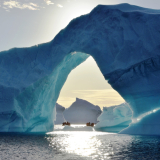
One cruise for three very different geographical and natural areas
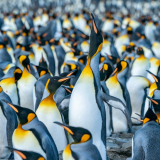
Observing these regions’ emblematic birds: king penguins, black-browed albatrosses, and southern rockhopper penguins
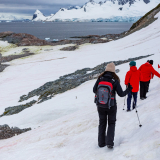
Landing on the Antarctic continent
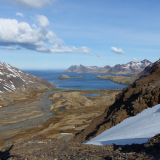
The memory of Shackleton’s expedition and the Falklands War

Admiring a great variety of marine mammals: whales, sea lions, elephant seals
Itinerary
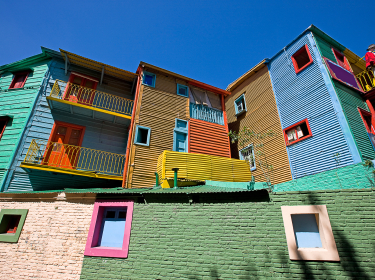
Day 1 Thursday 22 January 2026
Buenos Aires, Argentina
You will stay at the 5* Palladio MGallery Hotel (or equivalent). Check-in from 4 pm.
Free evening
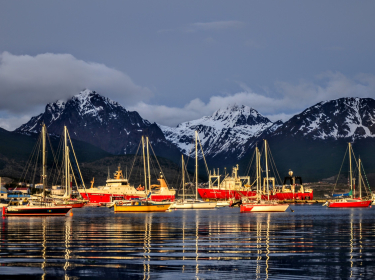
Day 2 Friday 23 January 2026
Ushuaia, Argentina
In the morning, you will take a domestic flight to Ushuaia.
Before boarding Exploris One, you’ll have the chance to go on an excursion to discover the Tierra del Fuego, after which you’ll make your way back to the ship which will be docked off Ushuaia’s shore. Its captain and crew will welcome you aboard for the first night of your Antipodean stay. Being at “land’s end” allows us to shift perspectives: the city looks tiny in contrast to the never-ending horizon. On our first night aboard the ship, we will begin our navigation on the Beagle Channel, one of the most important maritime routes of the Tierra del Fuego, second only to the Magellan Strait.
Day 2
Tierra Del Fuego , Ushuaia
Duration of excursion : Half day
Degree of difficulty of the excursion :
Upon your arrival to Ushuaia, you will be greeted by a French-speaking guide.
Thus will begin your adventure for the day, as you discover Patagonian landscapes, jagged peaks, and the forest of the Tierra del Fuego. Lunch will be provided during the excursion.
The Tierra del Fuego region spreads over the entirety of the Argentinian South-West and spreads over the border with Chile. You’ll admire diverse flora as you follow the hiking trail and stop to take photographs. With nature at its most splendid, you’ll think you’re admiring a painting…
At the end of the excursion, we will make our way back to Ushuaia and board Exploris One in the late afternoon.
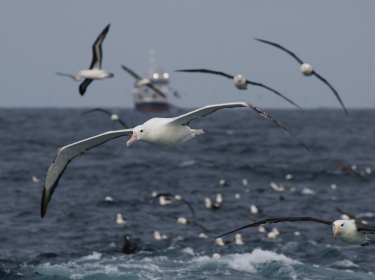
Day 3 Saturday 24 January 2026
At sea, Atlantic Ocean
During this oceanic interlude, we will travel over 1500 kilometres (837 nautical miles) as we the vertiginous expanses of the Antarctic Ocean.
On this journey, we might spot dolphins, porpoises and even whales from the deck. As we cross the ocean, we will of course talk about Antarctica’s previous explorers, these “men of steel on wooden ships”, the most famous of whom is perhaps Ernest Shackleton. Like Shackleton before us, our objective is to reach South Georgia. We have to circumvent the island to reach its northern coast – the only one which will allow us to disembark. Keep your eyes peeled for the island’s icy peaks as we approach.
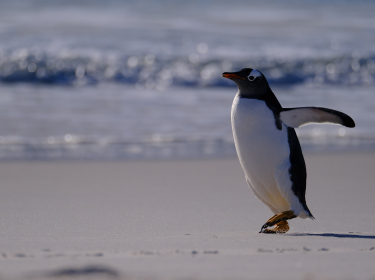
Day 4 Sunday 25 January 2026
The Falklands, United Kingdom
The Falklands Islands are relatively “new”, since they were only discovered by the Europeans in the 16th century, and colonised by the French, the Spanish, and subsequently the British in the 18th century. The archipelago’s western side, with its rugged cleaved cliffs, is not accessible by sea. To access the archipelago, we have to enter by the east coast and make our way through a jungle of high grass.
Here we disembark. From high up on the cliffs, you can see merciless geysers spraying salty sea water our way. Between the grassy rocks, two different colonies of bird patter about: black-browed albatrosses, and southern rockhopper penguins. The difference between the two birds is startling. The albatrosses are elegant, pedigreed, and their eyes seem to be delicately lined with kohl. The penguins are stocky, stubborn, and as they waddle, their yellow-feathered mohawk stands up straight on their head. The to-and-froing of these two animals – a sort of Laurel and Hardy pairing, if you will – will get a giggle out of any observer.
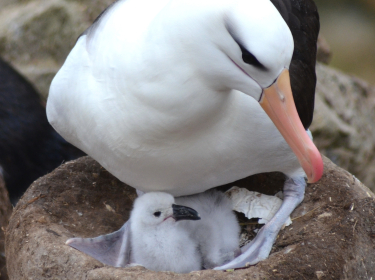
Day 5 Monday 26 January 2026
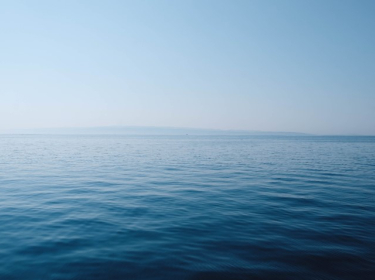
Day 6 Tuesday 27 January 2026
At sea, Atlantic Ocean

Day 7 Wednesday 28 January 2026
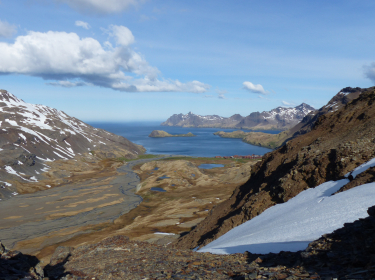
Day 8 Thursday 29 January 2026
South Georgia, United Kingdom
One of the last stops in Shackleton’s travels, Fortuna Bay is a narrow port, tightly surrounded by two glaciers. Deep in the bay, we find the King’s glacier, where Shackleton walked some of his last steps. At the foot of the mountain, you will find gurgling streams, flourishing grass, and rocky terrains. The animals most emblematic of the Southern Archipelagos, the elephant seals and the fur seals, dwell around here. While elephant seals are relatively peaceful (and smelly!) fur seals tend to be more aggressive. Our guides will demonstrate the correct behaviour to adopt to observe the fauna without disturbing it, allowing us to take wonderful photographs. See if you can spot a king penguin: we will see many more as we continue along our journey.
This programme is indicative only. We are first and foremost privileged guests on these lands, which are subject to extreme weather. Our itinerary may change from day to day, making each day on the cruise unique.
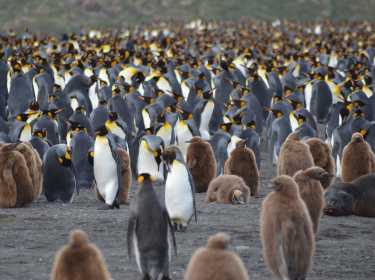
Day 9 Friday 30 January 2026
South Georgia, United Kingdom
If South Georgia is the realm of king penguins, think of Saint Andrews Bay as their parliament: this is the largest colony of king penguins in the region and the second largest on Earth. Tens of thousands of penguins romp and frolic about. The parents leave their offspring to search for food in the sea. Once they’ve had a successful hunt, they return to shore and call after their little ones to try to find them in the crowd. Though their hypnotic guttural cries may be difficult for us to distinguish, the baby penguins have no such trouble: they are part of a perfectly organised animal society. The penguins’ main aim is to make sure their offspring reaches maturity. And what delightful offspring they have! Toddling little balls of brown fur, who in just a few months will have metamorphosised into elegant tuxedoed birds.
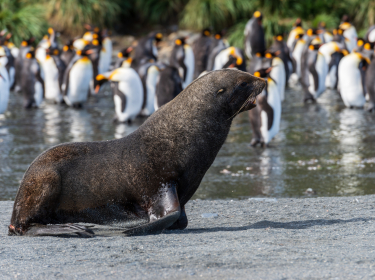
Day 10 Saturday 31 January 2026
South Georgia, United Kingdom
Grytviken, once the South Atlantic’s capital of whale hunting, was home to a station where the mammals were used for meat and blubber. A visit to this town helps us understand this once-prestigious activity, now widely decried.
The vestiges of the now-defunct ovens in the station give us an idea of how tough working conditions used to be. The ovens’ rusty orange colour provides a beautiful contrast with the greenery of the surrounding tussock grass. A visit to the local cemetery is a moving experience, for here lies Shackleton the explorer. His tombstone is marked with a star. To pay your respects, you might have to push through a group of fur seals who prevent access to the tomb: these mammals seem to have little concern for human burial rites… Past meets present on this island, for it is also home to an active British establishment on King Edward Point, where marine research and British overseas territory governance take place.
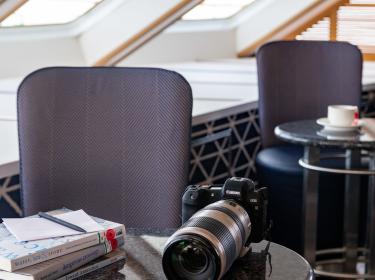
Day 11 Sunday 01 February 2026
At sea, Scotia Sea
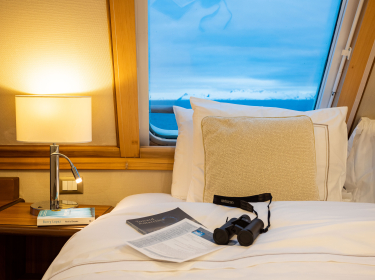
Day 12 Monday 02 February 2026
At sea, Scotia Sea
Exploris One is headed straight to the Antarctic Ocean. Beyond the 60th parallel, it’s not unusual to spot tabular icebergs: their surface is completely flat since they have detached from the ice shelves of the Weddell Sea. With a combination of eye-witnessing and in-auditorium conferences, you’ll become iceberg experts in no time. Our expert team will be able to answer any queries you may have. Each day we’ll learn more about these giant icy structures and the biological treasures hidden within these seemingly inhospitable territories. It is as seasoned glaciologists that we will arrive at the South Pole.
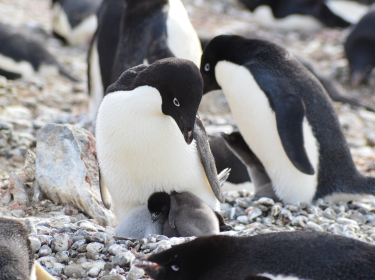
Day 13 Tuesday 03 February 2026
Sailing in the Antarctic Peninsula, Antarctica
Look to the horizon, and you will spot an imposing rust-coloured elevation: it is none other than Brown Bluff – bluff referring to a type of broad-faced cliff. As we enter the Weddell Sea, we will navigate through a maze of ice in order to finally reach the shore. And what a shore it is! At last, the Antarctic Continent, on which humans stepped foot for the first time a mere two hundred years ago. To follow – quite literally – in the footsteps of these pioneers is truly an unforgettable experience. Here we will come across a new species of bird: the Adélie penguin. Perhaps even more exciting because of its rarity is the elusive Snow Petrel, which nestles in the sloping cliffs.
Our journey continues onto the Antarctic Sound, named after the Swedish expedition ship Antarctic, the first vessel to navigate it in 1902. Our onboard experts will be delighted to tell you more about this legendary expedition. You might go for an impromptu Zodiac ride to see the ice up close.
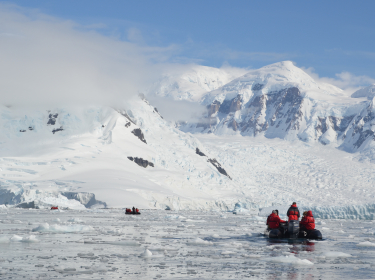
Day 14 Wednesday 04 February 2026
Sailing in the Antarctic Peninsula, Antarctica
As we sail through the Gerlache Strait, we will have many opportunities to disembark, either by foot or by Zodiac. There is no fixed itinerary for this part of our journey: the only guarantee is that each day will be a completely new adventure. We might choose to admire the blue hues of the Neko Harbour Glacier, or spot the terns that have made a home out of an abandoned Norwegian shipwreck in Wilhelmina Bay. We may decide to sail through the Neumayer Channel and go say hello to the British researchers based in Port Lockroy… Our ship’s captain and expedition chief will always choose the very best sites and activities, to make sure that you have an unforgettable experience.
The only condition we have to respect on this trip is to remain humble in the face of nature’s immensity. Here, both the climate and the ice can potentially override our plans. We are merely nature’s guests…
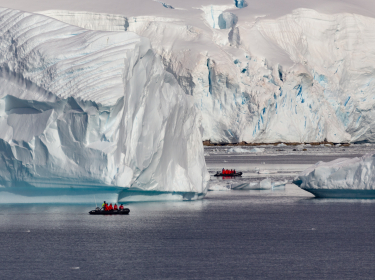
Day 15 Thursday 05 February 2026
Sailing in the Antarctic Peninsula, Antarctica
Paradise Bay: a dream for any fans of exploratory trips on Zodiacs. Here, the sea is often covered with ice sheets that have drifted with the return of the Southern Hemisphere summer. Our nature experts will help us decipher this icy geometry.
In Neko Harbour, two sounds intertwine: the crackling of the steadily melting glaciers and the squeaking and yelping of the gentoo penguins as they build their nests. The birds angrily bicker over materials while they complete their task – probably not the best example of teamwork…! On the beach, a Weddell seal – with a full belly and a round cat’s nose – digests his meal without a care in the world. As the day ends, you’ll feel you have been able to intimately converse with nature.
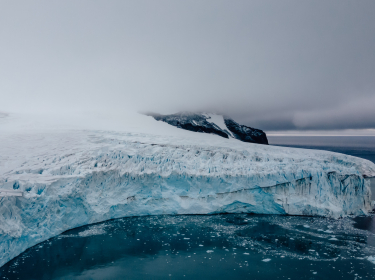
Day 16 Friday 06 February 2026
Sailing in the Antarctic Peninsula, Antarctica
In addition to its chinstrap penguins and whaling sites, the South Shetland Islands allow us to brush up on our volcanic knowledge. Deception Island is an ancient collapsed volcanic cone whose crater has been filled up with seawater. As Exploris One enters this sheltered harbour, we admire needle-like formations made of igneous rocks, which are remnants of ancient volcanic conduits.
The same type of rock formation can be found on Half Moon Island. There, a long beach in the shape of a crescent moon spreads far and wide, a spectacle of black and white. The beach’s monochrome beauty is interrupted only by a singular orange cabin, an Argentine research station, which is open some summers. The building’s vivid colour is complemented by the greenery of the lichen strewn on the nearby rocks, and the bright vermilion spots on the kelp seagull’s beaks.
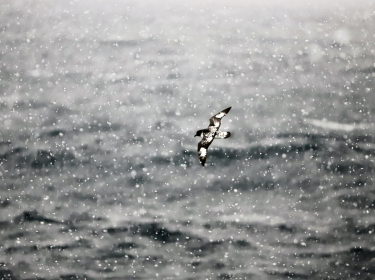
Day 17 Saturday 07 February 2026
At sea – Drake Passage, Antarctica
No traveller is left unchanged after fifteen days halfway across the world. Perhaps the most remarkable and memorable aspect of this trip will have been our proximity to the Antarctic wildlife. One reason that we are allowed to have such close access to the animals is the Antarctic Treaty of 1959, which forbids the hunting of birds and mammals in the Antarctic Ocean.
As we sail back towards Ushuaia, surrounded by whales, storm petrels and albatrosses, our onboard nature experts remind us of the incredible importance of such international treatises: they are what make the Antarctic a true sanctuary. This privileged access to nature makes us de facto ambassadors for the fauna and flora. It’s a conviction that will surely be shared by each and every one of Exploris One’s passengers after two weeks of seeing non-stop wonders.
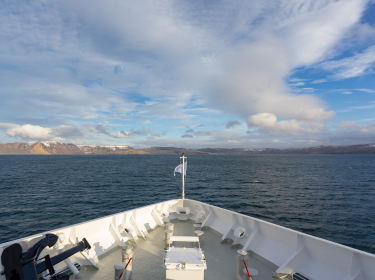
Day 18 Sunday 08 February 2026
At sea – Drake Passage, Antarctica
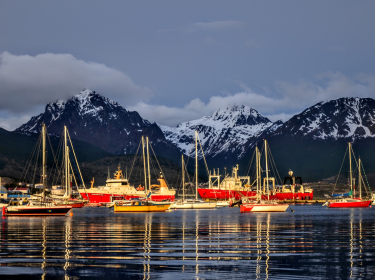
Day 19 Monday 09 February 2026
Ushuaia, Argentina
Disembarkation in the morning.
After breakfast, transfer to the airport for our domestic flight to Buenos Aires.
Activities on board
Staterooms & Fares
Select your cabin on board Exploris One
L'Exploris One
The best an expedition cruise has to offer
Exploris One, which sails under the French flag, has been especially designed to navigate the world’s most demanding waters, both in open water and in the polar regions. Equipped with a reinforced hull, it is the ideal ship for exploring glacial regions in a completely safe environment: in fact, it is regarded as a global benchmark in terms of safety.
Thanks to its recent renovations (2018 & 2023), Exploris One is able to offer both adventure and comfort, along with an excellent personalised service, making our expeditions truly unique. It features 60 cabins and 12 suites, among the most spacious available on board any expedition ship today. It boasts a fitness and wellness area, panoramic decks and lounges, as well as outdoor Jacuzzis, so that our passengers may relax in between calls.
The ship is also equipped with twelve Zodiacs©, which allow all of our passengers (depending on weather and sailing conditions) to disembark at the same time, several times a day, on territories which are not usually accessible.
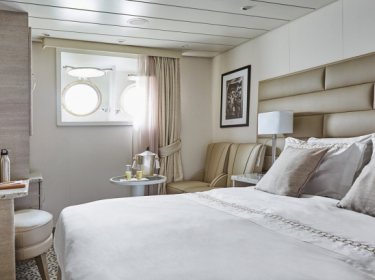
Cabine PREMIUM , Au pont 3, à l'avant du navire
- 14-15 m²
- 2 hublots
- Deux lits séparés ou un lit queen-size
- Coin salon avec bureau
- Penderie avec coffre-fort
- Salle de bain en marbre avec douche
- Mini bar
- Peignoirs et chaussons de bain
- Coiffeuse et sèche-cheveux
- Réveil avec station d’accueil
- Sélection de produits de bain
- Bureau et papier à lettres
- Ligne téléphonique directe par satellite
- Prises 220V
- Accès internet WIFI illimité (réception satellite aléatoire en fonction de la navigation et de la latitude)
- TV écran plat, chaînes internationales (aléatoire suivant la zone de navigation) et vidéos à la demande avec contenu interactif
- Room service 24H/24
- Climatisation individuelle
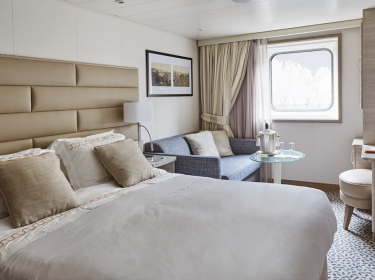
Superior Cabin , On deck 4, at the front of the ship
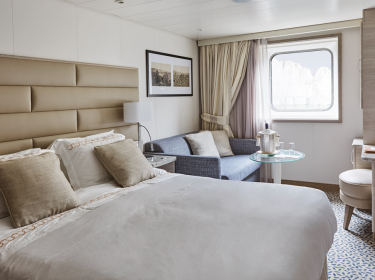
OCEAN Stateroom , Deck 3
- 18 m²
- Window - porthole (80cm x 80cm)
- Two separate beds or one queen size bed
- Lounge area with desk
- Wardrobe with safe
- Marble bathroom with shower
- Mini bar
- Bathrobes and slippers
- Dressing table and hairdryer
- Alarm clock with docking station
- Selection of bath products
- Desk and stationery
- Direct satellite telephone line
- 110/220V sockets
- Unlimited WIFI internet access (satellite reception varies depending on navigation and latitude)
- Flat screen TV, international channels (availability varies depending on navigation area) and on-demand videos with interactive content
- 24-hour room service
- Private air conditioning
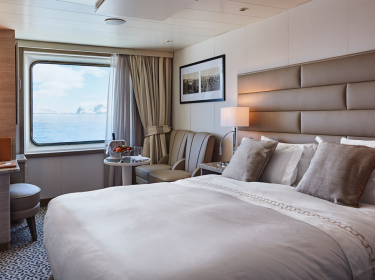
DELUXE Stateroom , Deck 4
On deck 4
- 18 m²
- Large window - porthole (120cm x 110cm)
- Two separate beds or one queen size bed
- Lounge area with desk
- Wardrobe with safe
- Marble bathroom with shower
- Mini bar
- Bathrobes and slippers
- Dressing table and hairdryer
- Alarm clock with docking station
- Selection of bath products
- Desk and stationery
- Direct satellite telephone line
- 110/220V sockets
- Unlimited WIFI internet access (satellite reception varies depending on navigation and latitude)
- Flat screen TV, international channels (availability varies depending on navigation area) and on-demand videos with interactive content
- 24-hour room service
- Private air conditioning
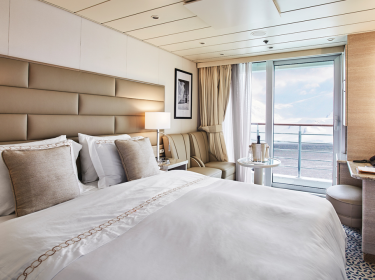
BALCONY Stateroom , Deck 5
- From 19 to 20 m², including a 1.5 m² French-style balcony
- Sliding panoramic bay window
- Two separate beds or one queen size bed
- Lounge area with desk
- Wardrobe with safe
- Marble bathroom with shower
- Mini bar
- Bathrobes and slippers
- Dressing table and hairdryer
- Alarm clock with docking station
- Selection of bath products
- Desk and stationery
- Direct satellite telephone line
- 110/220V sockets
- Unlimited WIFI internet access (satellite reception varies depending on navigation and latitude)
- Flat screen TV, international channels (availability varies depending on navigation area) and on-demand videos with interactive content
- 24-hour room service
- Private air conditioning
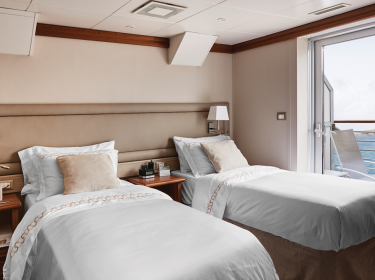
NAVIGATOR Suite , Deck 7
- 37 m², including 1 large 8 m² balcony
- Sliding panoramic bay window
- Two separate beds or one queen size bed
- Lounge area with desk
- Wardrobe with safe
- Marble bathroom with bath and separate shower
- Nespresso coffee machine
- Butler service
- Mini bar
- Bathrobes and slippers
- Dressing table and hairdryer
- Alarm clock with docking station
- Selection of bath products
- Desk and stationery
- Direct satellite telephone line
- 110/220V outlets
- Unlimited Premium WIFI internet access (satellite reception varies depending on navigation and latitude)
- Flat screen TV, international channels (availability varies depending on navigation area) and on-demand videos with interactive content
- 24-hour room service
- Private air conditioning
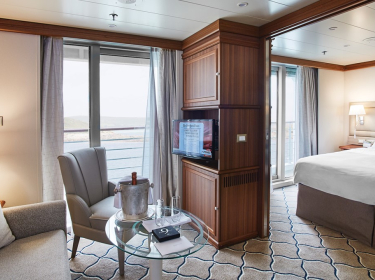
DISCOVERY Suite , Deck 5
On deck 5
- 39 m² including two french balconies (1,5 m² each)
- Two Sliding panoramic bay windows
- Two separate beds or one queen size bed
- Living room with sitting area equipped with a sofa bed
- Dressing room with safe
- Marble bathroom with bath and separate shower
- Coffee machine
- Mini bar
- Bathrobes and slippers
- Dressing table and hairdryer
- Alarm clock with docking station
- Selection of bath products
- Desk and stationery
- Direct satellite telephone line
- 110/220V outlets
- Unlimited Premium WIFI internet access (satellite reception varies depending on navigation and latitude)
- Flat screen TV, international channels (availability varies depending on navigation area) and on-demand videos with interactive content
- 24-hour room service
- Private air conditioning
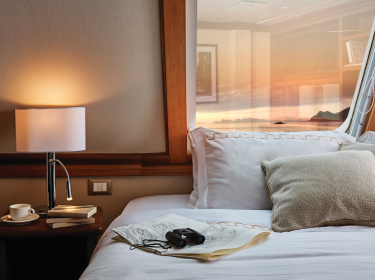
GRAND Suite , Deck 7
- 57 m² including a large 8m² private balcony
- Sliding panoramic bay window
- Two separate beds or one queen size bed
- Living room with sitting area equipped with a sofa bed
- Dressing room with safe
- Marble bathroom with bath and separate shower
- Nespresso coffee machine
- Butler service
- Mini bar
- Bathrobes and slippers
- Dressing table and hairdryer
- Alarm clock with docking station
- Selection of bath products
- Desk and stationery
- Direct satellite telephone line
- 110/220V outlets
- Unlimited Premium WIFI internet access (satellite reception varies depending on navigation and latitude)
- Flat screen TV, international channels (availability varies depending on navigation area) and on-demand videos with interactive content
- 24-hour room service
- Private air conditioning
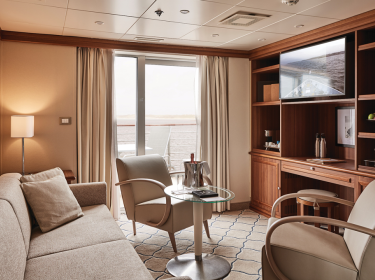
SHIPOWNER'S Suite , Deck 7
- 67 m² including a large 15m² private terrace
- Two sliding panoramic bay windows
- Two separate beds or one queen size bed
- Living room with large lounge equipped with a sofa bed
- Large dressing room with safe
- Marble bathroom with bath and separate shower
- Nespresso coffee machine
- Butler service
- Mini bar
- Bathrobes and slippers
- Dressing table and hairdryer
- Alarm clock with docking station
- Selection of bath products
- Desk and stationery
- Direct satellite telephone line
- 110/220V outlets
- Unlimited Premium WIFI internet access (satellite reception varies depending on navigation and latitude)
- Flat screen TV, international channels (availability varies depending on navigation area) and on-demand videos with interactive content
- 24-hour room service
- Private air conditioning
* This price is per person based on double occupancy, including our “Discovery Offer -25%” - Limited time offer.
Gallery
